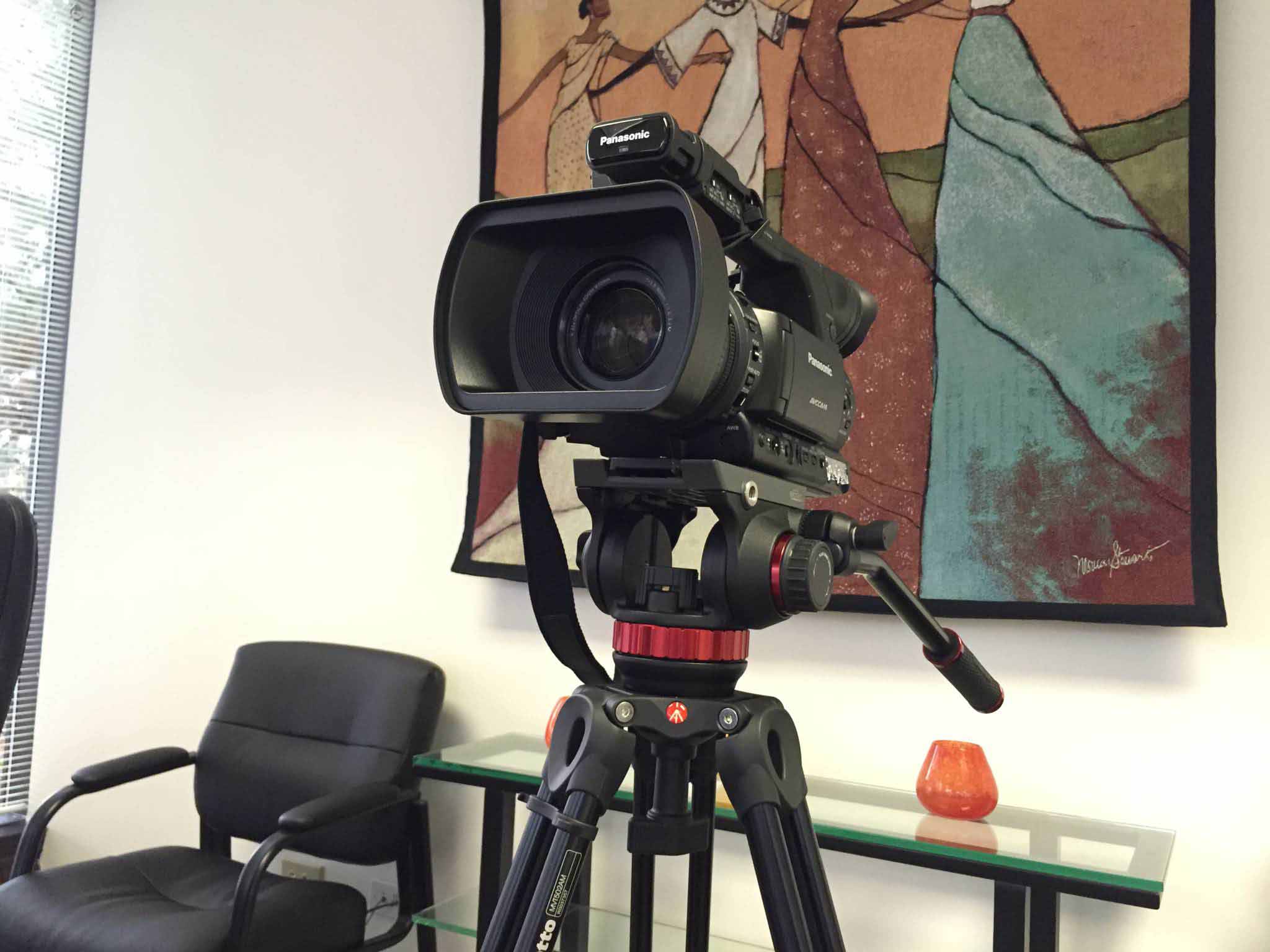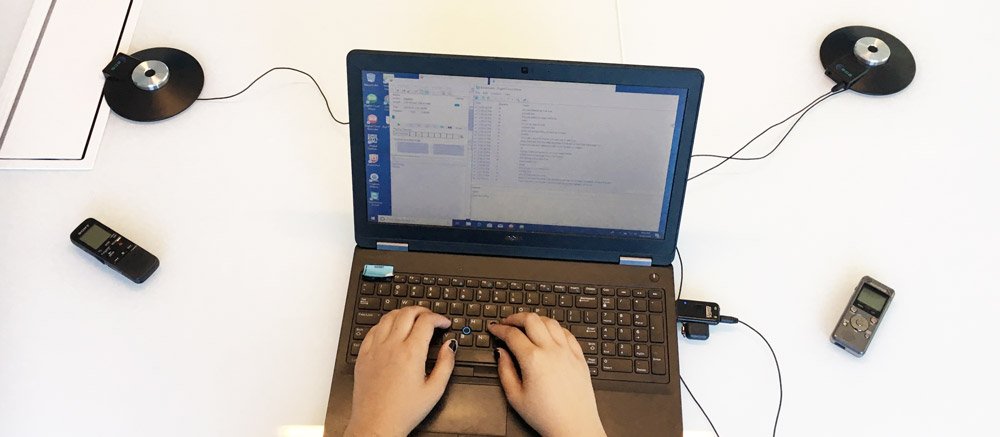Recognizing Exactly How Court Coverage Works: A Secret Part in the Justice System
Court coverage plays a crucial role in the legal system. It assures that all courtroom process are recorded accurately. Stenotype reporter use specialized devices and strategies to develop verbatim transcripts. These transcripts serve numerous functions, consisting of allures and legal clarity. Recognizing the ins and outs of court coverage exposes its value in maintaining the stability of justice. What difficulties do stenotype reporter encounter in this evolving area?
The Role of Court Reporters in the Legal System
Stenotype reporter play an important duty in the legal system, ensuring accurate and reliable documents of courtroom proceedings. They are responsible for catching every talked word during trials, hearings, and depositions, producing a verbatim records that works as a long-term document. This documentation is essential for appeals, supplying a structure for greater courts to examine cases.In addition to recording spoken language, stenotype reporter additionally promote interaction in between lawyers, courts, and various other parties associated with lawful issues. Their job advertises transparency and accountability within the judicial process.Utilizing specialized devices and software application, court press reporters should continue to be focused and mindful, commonly functioning under stress to meet limited deadlines. Their transcripts are not just crucial for legal recommendation but also for protecting the honesty of judicial proceedings. Eventually, stenotype reporter add substantially to the reasonable management of justice, making sure that all voices are listened to and videotaped accurately.
Important Skills Required for Court Coverage
Court reporting demands a special collection of skills that are vital for accuracy and effectiveness. Mastery of stenography techniques, strong listening and comprehension abilities, and careful interest to detail are crucial for success in this area. These skills make it possible for stenotype reporter to create trustworthy transcripts that work as vital records in the legal system.
Mastery of Stenography Techniques
While grasping stenography techniques is necessary for aspiring stenotype reporter, it calls for dedication and method to create the necessary skills. Stenography includes using a specialized key-board to capture talked words in actual time, making accuracy and rate vital. Court reporters need to find out to make use of shorthand symbols and create muscle memory to ensure reliable transcription. Regular exercise with dictation exercises aids in enhancing keying rate, while familiarity with lawful terminology enhances understanding during proceedings. Moreover, recognizing the phonetic structure of the English language is considerable, as it aids in properly recording dialogue. Ultimately, efficiency in stenography not only assists in reliable interaction within the court but also supports the integrity of the lawful procedure.
Solid Paying Attention and Comprehension
Efficient court reporting hinges not only on stenography skills but likewise on strong listening and comprehension capacities. Stenotype reporter have to actively pay attention to testaments, legal arguments, and dialogues, guaranteeing they understand the nuances of spoken language. This skill promotes exact transcription of intricate lawful proceedings, where every word matters. Comprehension extends past surface-level understanding; press reporters need to interpret context, tone, and intent to catch the essence of conversations precisely. Additionally, they commonly run into specialized terms and lingo, needing quick adaptation and retention of details. The capability to synthesize what is listened to while concurrently recording is important, as it assures the honesty of the authorities document. Strong listening and understanding are vital in providing accurate and reliable court reports.
Attention to Information
Attention to detail is a fundamental skill for court press reporters, enhancing their listening and understanding capacities. This precision ensures that every talked word, inflection, and subtlety is caught accurately in transcripts. Stenotype reporter must meticulously keep in mind legal terms, names, and complex dialogue to offer reputable documents for legal proceedings. A minor oversight can bring about substantial consequences, possibly affecting instance end results (durham reporting). Furthermore, court reporters usually function under stress, requiring them to keep focus and accuracy in busy environments. Their attention to information not just enhances the integrity of the judicial process yet also cultivates depend on amongst attorneys. Ultimately, this skill is essential for producing transcripts that serve as clear-cut records in lawsuit, ensuring justice is supported
The Modern Technology Behind Court Reporting
As court reporting develops, the innovation utilized by professionals in the field has come to be significantly sophisticated. Traditional shorthand writing has mostly been supplemented by sophisticated electronic tools that improve rate and precision. Stenographic machines, furnished with specialized software application, allow court reporters to record talked words in real-time, equating them into text instantaneously. This technology not only accelerates the transcription process yet additionally minimizes the possibility for errors.Moreover, voice recognition software application is emerging as a valuable asset, enabling computerized transcription from audio recordings. This advancement provides an alternative for creating records when a human press reporter may not be offered. Furthermore, cloud-based storage remedies promote easy gain access to and sharing of transcripts among attorneys, guaranteeing that crucial information is readily available. As these technologies continue to development, they play an important function in maintaining the integrity and effectiveness of the justice system, eventually sustaining the necessary work of court press reporters.
The Process of Transcribing Legal Process
The process of recording legal process needs a mix of skill and technology to ascertain accuracy and performance. Court press reporters make use of specific tools, such as stenographic equipments, to catch talked words in real-time. This innovation makes it possible for the reporter to convert discussion right into text, ensuring that every declaration made during a trial or hearing is documented.Once the session ends, the initial transcripts undergo modifying for clarity and coherence. Press reporters might also include audio recordings to cross-reference and validate the accuracy of their transcriptions. This thorough procedure warranties that the final paper mirrors an exact account of the proceedings.Additionally, stenotype reporter need to maintain a thorough understanding of lawful terminology and court room procedures to successfully translate spoken language right into written kind. Their knowledge not just aids in developing reliable documents however additionally sustains the legal system by providing important paperwork for allures and future referrals.
Ensuring Accuracy and Integrity in Court Records
Making sure precision and honesty in court documents is critical for the judicial procedure. Stenotype reporter play a critical role in capturing process properly, while advancements in modern technology enhance their ability to maintain high standards. In addition, promoting discretion requirements is important to protect delicate details within legal documents.
Role of Court Reporters
Court press reporters play a vital function in the judicial system by recording precise and verbatim accounts of legal process. Their primary duty is to ensure that every spoken word is documented specifically, providing a trusted record that can be referenced in allures and future situations. By making use of specific tools and strategies, court reporters keep the honesty of the court document, assisting in transparency and responsibility in the legal process. They additionally help judges, attorneys, and various other lawful experts by giving transcripts that are vital for understanding instance details and lawful arguments - durham reporting. The precision of a stenotype reporter's job directly influences the end results of cases, underscoring their substantial contribution to the quest of justice and the regulation of legislation
Technology in Reporting
Improvements in technology have actually substantially changed the field of court coverage, enhancing the accuracy get redirected here and honesty of court records. Modern court reporters make use of innovative devices such as stenographic machines and digital audio recording tools, guaranteeing accurate transcription of spoken words. These tools enable for real-time transcription, which offers immediate accessibility to court process and assists in prompt decision-making. Additionally, software application geared up with sophisticated algorithms aid in determining and correcting mistakes, additionally reinforcing the reliability of recorded data. The combination of cloud storage space options assures that documents are firmly archived and conveniently retrievable, reducing the threat of loss or damages. On the whole, these technological innovations play a crucial role in maintaining the quality and reliability of court documentation in the justice system.
Keeping Privacy Standards
A crucial element of court reporting is keeping confidentiality criteria, which are necessary for ensuring the accuracy and honesty of court documents. Stenotype reporter are left with delicate info, needing stringent adherence to ethical guidelines and legal arrangements. This discretion safeguards not just the privacy of the included celebrations yet likewise the credibility of the judicial process. Reporters use protected methods for taking care of and saving transcripts, frequently employing encryption and limited gain access to procedures. Furthermore, they need to browse the intricacies of various lawful visit site structures that control privacy in different territories. By maintaining these standards, court press reporters add significantly to the dependability of court records, promoting count on the justice system and making certain that lawful process can be performed with miraculous professionalism and trust and respect for privacy.
Different Kinds Of Court Reporting Services
While the legal landscape continues to advance, the variety of court coverage solutions offered has broadened substantially to satisfy diverse needs. Standard court coverage continues to be necessary for capturing verbatim records during trials and depositions. However, additional services have actually arised, including real-time coverage, which provides instant accessibility to transcriptions as they are generated, beneficial for attorneys and judges.Video court coverage has actually likewise acquired appeal, permitting for visual documentation of witness testaments, boosting the record with non-verbal hints. Furthermore, remote court reporting has actually come to be progressively relevant, using virtual deposition services to suit geographical constraints.Lastly, some court reporters focus on captioning solutions for the hearing damaged, ensuring availability in lawful proceedings. This varied series of court coverage solutions enables lawyers to select one of the most appropriate choice for their specific circumstances, eventually improving the performance and performance of the justice system.

The Future of Court Reporting in a Digital Age

As modern technology remains to improve the lawful area, the future of court coverage is poised for substantial change. The combination of innovative tools such as artificial knowledge and real-time transcription software program is coming to be significantly widespread. These advancements assure to simplify the coverage process, allowing for faster and more precise paperwork of lawful proceedings.Moreover, the shift in the direction of remote hearings demanded by global events has actually accelerated the adoption of electronic systems, enabling stenotype reporter to function successfully from various locations. This alteration additionally questions about the conservation of standard skills, as the focus on innovation might outweigh the nuanced art of shorthand reporting.Nonetheless, human court press reporters remain vital, providing context, emotion, and proficiency that makers can not reproduce. As the lawful landscape evolves, a hybrid model that incorporates technology with human understanding might define the future of court reporting, ensuring its significance in an electronic age.
Regularly Asked Concerns

What Qualifications Do Court Reporters Required to Operate In the Field?
Stenotype reporter typically need a high school diploma, specialized training in court reporting, and accreditation from pertinent specialist organizations. Proficiency in shorthand or voice writing and solid language skills are crucial for success in this field.
How much time Does It Require To End Up Being a Qualified Stenotype Reporter?
Becoming a licensed stenotype reporter typically needs two to 4 years of education and check over here learning, consisting of specialized training and method. The period varies based on individual development, the chosen program, and the qualification process, influencing total completion time.
Can Court Reporters Job Remotely or Just In-Person?
Court reporters can work both from another location and in-person, depending upon the needs of a case. Advances in innovation have enabled many to provide services via video clip conferencing, allowing versatility in their work settings.
What Is the Ordinary Wage for a Stenotype Reporter?
The typical wage for a stenotype reporter differs by location and experience, generally varying from $50,000 to $80,000 annually. Elements such as field of expertise and demand can considerably influence individual earnings within the career.
How Do Stenotype Reporter Take Care Of Legal Jargon Throughout Proceedings?

Comments on “The Essential Role of durham reporting Every Step of the Way”